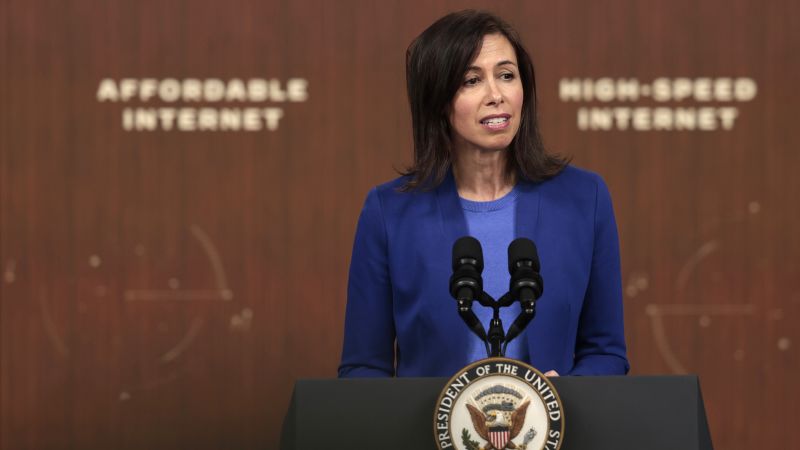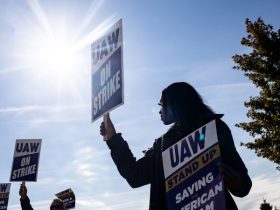The US government is cracking down on cable TV “junk fees,” forcing providers to publish a single, comprehensive price — so consumers know up front exactly how much they’ll pay for services inclusive of all extra costs.
The junk fees crackdown is part of a series of moves the Federal Communications Commission announced Thursday. During its monthly open meeting, the agency addressed other consumer issues, including finalizing a new cybersecurity product label for hack-resistant tech gadgets and releasing a report finding that 24 million Americans still lack high speed internet access.
The new junk fees rule requires cable and satellite TV companies to list “all-in” prices to consumers in their billing and marketing materials — including any miscellaneous fees, such as those related to sports programming or local broadcast channels.
Between 24% and 33% of the typical consumer’s bill can be attributed to fees, consumer advocates told the FCC.
The new rule aims to help consumers comparison shop among different providers. The move could simplify what is currently a difficult process of comparing apples to oranges, the FCC said.
“No one likes surprises on their bill,” said FCC Chairwoman Jessica Rosenworcel. “The advertised price for service should be the price you pay when your bill arrives. It shouldn’t include a bunch of unexpected junk fees that are separate from the top line price you were told when you signed up.”
In a report released Thursday alongside the agency’s 3-2 vote, the FCC cited a filing that Consumer Reports submitted to the agency, alleging that cable companies publicly advertise “relatively low base rates” to lure customers in before imposing “a dizzying array of other charges.”
The cable industry has pushed back, saying “all-in” pricing is unnecessary and that the current practice of breaking out fees into separate line items is a more transparent approach that helps consumers.
“Our members clearly disclose the specific amounts of the fees that will apply and the total amount customers will pay for service, thereby ensuring that customers are not ‘surprised by unexpected fees,’” said NCTA, a trade association representing some of the nation’s largest cable companies, in a filing to the FCC.
In a separate move last year, the FCC proposed banning certain cable fees altogether, including early termination fees that the agency says hinder competition and prevent customers from easily switching providers. That proposal would also require companies to provide consumer refunds if a subscriber cancels their plan mid-month.
In addition to cable, the FCC also addressed internet availability during its Thursday meeting. Tens of millions of Americans still don’t have access to high-speed home internet, the FCC added Thursday in a new report highlighting the digital divide.
The problem affects more than 1 in 4 Americans, or 28%, who live in rural areas, the FCC said, and the same is true for 23% of people living on tribal lands. Overall, 7% of the country, or 24 million Americans, lack high-speed access.
“It was four years ago this week that so many of us were told to go home,” said Rosenworcel, referring to the Covid-19 lockdowns of 2020. “The pandemic exposed our digital divide in living color.”
The new report is based on 2022 data and first-time insights from a massive, years-long revamp of FCC coverage maps — which officials say provide radically more accurate service estimates. Previously, entire census blocks were considered served by broadband if just one household within a census block had high-speed internet, dramatically overstating the number of connected Americans.
The report also reflects newly adopted revisions in how the country defines high-speed internet, which the FCC voted to approve on Thursday.
The definition of high-speed home internet has not been updated since 2015, when the FCC set the threshold at a minimum download speed of 25 megabits per second and a minimum upload speed of 3 megabits per second.
Thursday’s revisions set the new standard at 100 Mbps for downloads and 20 Mbps for uploads, reflecting advances in technology and how faster internet speeds have become an absolute necessity for everyday life, supporting everything from telehealth visits to remote work.
The definition of broadband is more than academic; it has far-reaching implications for how the country allocates billions in federal funding for infrastructure and government aid programs.
The FCC moves follow Congress’ decision to spend billions of dollars in the 2021 bipartisan infrastructure law to build out internet service to hard-to-reach and underserved areas. It also comes as more than 23 million low-income households are at risk of losing their internet service, or could face potential bill shock, due to the expiration this spring of a critical benefit program popular with both parties known as the Affordable Connectivity Program.
Thursday’s FCC report sets a long-term goal to serve Americans everywhere with download speeds of at least 1,000 Mbps, also known as gigabit speeds, and download speeds of 500 Mbps or more.
Republican members of the FCC criticized the report on connectivity and the vote to increase the definition of broadband, saying the moves appear intended to justify more regulation of internet service providers and taxpayer spending.
A Biden administration plan to protect consumer electronics from hackers also received final approval on Thursday as the FCC voted unanimously to greenlight a product label that will soon appear on smart home devices, baby monitors and other common gadgets.
The label, which resembles a shield and that officials compare to the Energy Star certification program that denotes energy-efficient products, is intended to help buyers pick out connected appliances that voluntarily meet rigorous cybersecurity standards.
A wide range of products will be eligible for the label, including internet-connected refrigerators, washing machines, doorbell cameras and smart speakers — provided that they meet criteria published by the National Institute for Standards and Technology.
Some of the participating electronics makers and retailers in the program include giants such as Logitech, LG, Samsung, Best Buy and Amazon.
“You want to know that when you bring that monitor into your house to watch your newborn, that connection is secure and is not going to invite any malware or malicious activity into your home,” said Rosenworcel, the chairwoman. “I think parents everywhere feel that way.”
US officials have said that consumers have their own role to play in protecting the nation from cyberattacks — and that is by making informed decisions about what tech products to buy.
“Imagine you’re a mom, and you’re worried about someone taking pictures of your infant lying in a crib and posting them on the dark web,” US deputy national security advisor Anne Neuberger said during an onstage appearance this year at the Consumer Electronics Show in Las Vegas. “Think about your home alarm system, somebody hacking into it and unlocking digital locks. Those are examples we see today.”
The “US Cyber Trust Mark” label will improve the country’s baseline cybersecurity by ensuring that the most widely used tech products in America are those that have been specifically hardened against hacking, the Biden administration has said. It could also encourage competition among electronics manufacturers to offer the most secure devices on the market.
Thursday’s action by the FCC establishes the Cyber Trust Mark program, plus a publicly available database that will list all the trusted products that have received the label.
Neuberger has said the Biden administration is working with overseas counterparts to extend the labeling program to the European Union, and that the partnership will make US products more attractive and competitive in the EU. She has also said consumers could begin seeing the label on store shelves by the end of the year.
Read the full article here











Leave a Reply